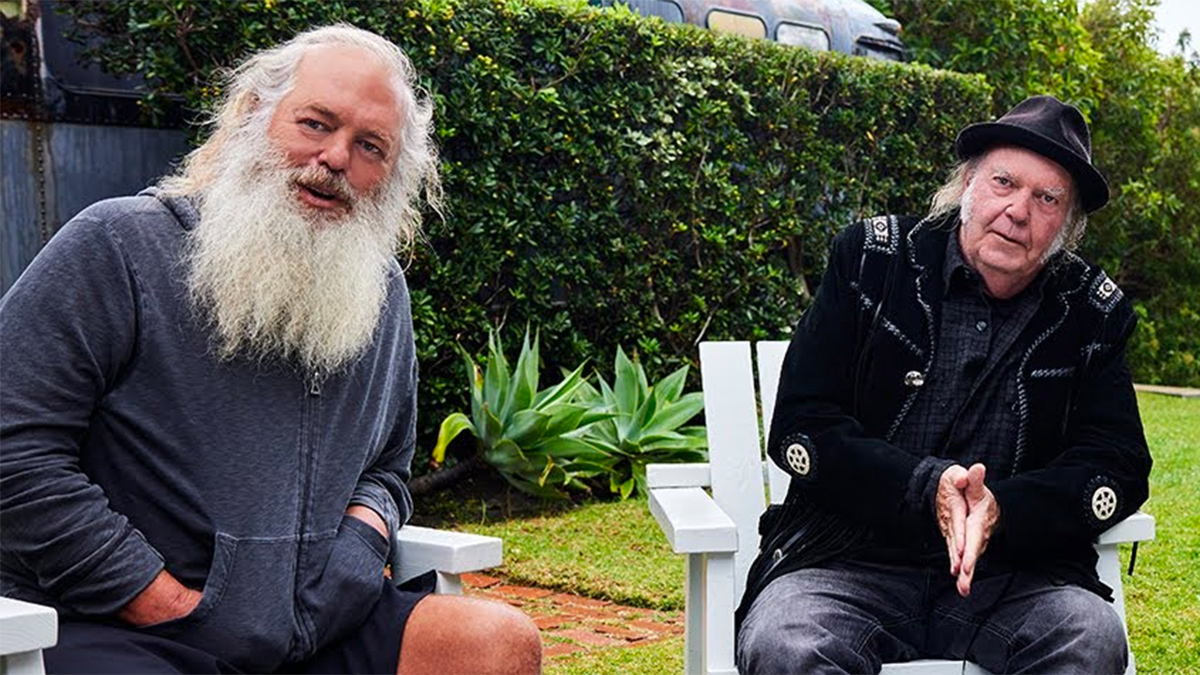Neil Young says that “nothing is real” when you take the “dark step” into digital music production, as Rick Rubin praises its convenience
Best of 2022: The pair explain their hybrid approach to recording new Crazy Horse album World Record

Join us for our traditional look back at the stories and features that hit the spot in 2022
Best of 2022: On the eve of the release of World Record, his new album with Crazy Horse, Neil Young has been talking alongside producer Rick Rubin about how it was made.
In a new interview with Apple Music’s Zane Lowe, a behatted Young and barefoot Rubin sat down in the rainy garden of the latter’s Shangri La Studios in Malibu, California, and one of the first subjects up for discussion was how the new album was recorded.
“This is a hybrid,” says Young. “This was done to tape and immediately to digital, so it was only on tape for a split second and then it was digital. But we still have the original tape. So then after that we're working with the digital copy of it.”
Young refers to the move into the digital realm as “that dark step where nothing is real”. However, “it was [real] before you got here,” he adds. “And that's where we made the record [digitally]. And then we went back to the place [analogue], and whatever we used that was acoustic, getting back to the place through the [analogue] board. If there was ever any acoustic echo or anything that got used, or anything that was added from the board, the sound of the board, all of that, that all went to analogue. But our original tones came from an analogue tone to a digital tone, where we worked with the digital tone and blended it to an analogue tone."
If he’s not keen on working digitally, though, why did Young and Rubin choose this method? The answer, it transpires, is control.
"There's a lot you can do with digital that's really convenient that you can't you can't do with analogue,” says Rubin. “Or - I don't want to say can't do it with analogue - but if you did it with analogue, you wouldn't get the same benefit that you get if you do it digitally, because you have to make copies. And they're going down generations. Whereas if you can get into the digital realm immediately from analogue at the highest quality, if you're playing in that world, it's not degrading.”
Want all the hottest music and gear news, reviews, deals, features and more, direct to your inbox? Sign up here.
There was a further element to this hybrid production method, too, says Rubin: “We mixed to analogue again after it went into the digital realm. We mixed to analogue tape.”
Despite his partial move to the ‘dark side’ of digital, Young still believes in the benefits of recording to analogue tape, but admits that it can be a capricious medium to work with.
“When you go over the analogue [tape] head recording something analogue and then you capture it right away, it's not the same as going over the analogue head, capturing it, and then going back and playing it again, to listen to it, because it changed the second time it's being played. It's not the first time.



I’m the Deputy Editor of MusicRadar, having worked on the site since its launch in 2007. I previously spent eight years working on our sister magazine, Computer Music. I’ve been playing the piano, gigging in bands and failing to finish tracks at home for more than 30 years, 24 of which I’ve also spent writing about music and the ever-changing technology used to make it.